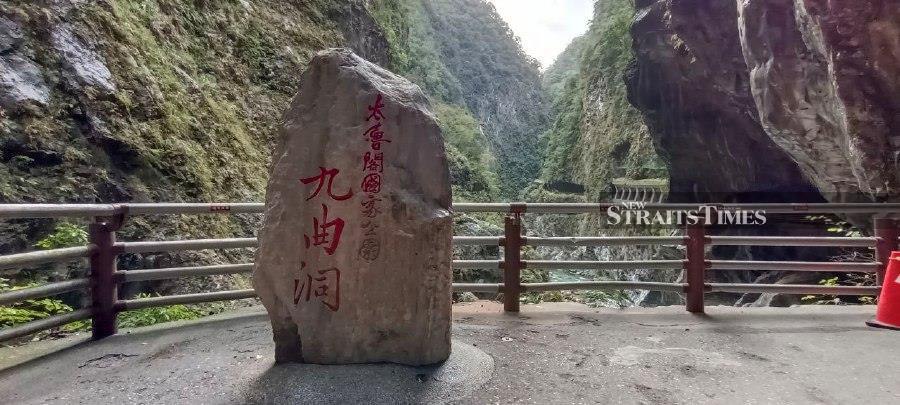By Olivia Miwil - April 3, 2023 @ 12:52pm
ONE thing is for sure: my second trip to Taiwan is set to be different, thanks to Hualien's beautiful nature, healthy lifestyle and peaceful surroundings.
Located on Taiwan's east coast, the city is about four hours' drive, a two-hour scenic train ride or a 50-minute flight from Taipei. It is normal for locals to ask visitors if they have visited Taiwan's famous Taroko National Park, the county's most popular tourist destination. Indeed, it is the first place our host, the Taiwan Tourism Bureau, takes a group of 11 media representatives from Malaysia and Brunei when we reach the city.
The park, which takes its name from the indigenous Truku tribe, covers 92,000ha and is home to unique geological and natural resources, including 27 peaks of more than 3,000 metres high.
As our bus enters the park, its gigantic geological features catch my attention, but it goes beyond words when we get to enjoy the impressive scene up close at the Tunnel of Nine Turns.
The route with its 700-metre-long trail, also known as Jiuqudong, snuggles against the tall mountain and turquoise Liwu River that flows through the gorge. The fine weather, fresh air and rushing of the river add a soothing effect to the beautiful sight.
I am thrilled to learn that there are more challenging trails that come with different scenery.
There are almost 30 trails, and among its famous trails is the 1.3km Swallow Grotto, which has small springs swallowed by small caves that cover the almost-vertical cliffs.
For those who are up for a longer walk, the 8.8km Shakadang Trail will get them up to four hours walking along the lowest tributary of the Liwu River. Not only that, they also get to see exotic butterflies and birds.
The 6.2km Zhuilu Old Trail, on the other hand, is the most challenging trail and only meant for experienced hikers. The toughest part is the section that only has a metal cable to hold on to.
For this trail, the park issues only 100 permits a day.
Taroko's major annual fall event in November attracts runners from all over the world. It will be the only time marathoners have the Cross-Island Highway to themselves without vehicles.
After a day of exploring the outdoors, our host treats us to a 15-minute hot spring soak at Ruisui. Brief, but it is enough to soothe our sore muscles.
The hot springs in Ruisui township were discovered in 1909 and developed into public bath houses during Japanese rule. Its water composition is similar to that of one of three ancient Japanese springs "Arima Onsen". Due to its yellow and turbid water, it is known as "Golden Spring".
The water temperature of the hot spring is about 48˚C and is rich in minerals such as iron and barium.
HEALTHY EXCURSION
On the second day, we go to Tafalong village to experience Amis tribe food and to engage in hands-on activities — making rice wine and decorating our bottles using the tribe's colourful yarn ball, and making glutinous rice balls.
To make the rice balls, we have to crush and grind cooked rice using a wooden mortar and pestle and knead it into balls. The glutinous rice is produced by the village folk themselves.
After all the hard work, we are treated to a lunch spread that includes freshly picked vegetables planted in the backyard.
Our vegetable feasting continues at Sakura Field Health and Leisure Farm in the evening, when we pick, wash and cook our own wild vegetables.
We learn that as the effects of climate change might affect crops, people should recognise some edible wild plants as they are more resilient to extreme weather.
The farm also composts kitchen waste to fertilise their crops.
Sakura, the founder, survived cancer for many years after adopting a diet that consisted of eating seven big bowls of different vegetables every day.
My group tried to follow the advice on eating and recommended portion during our steamboat dinner. Though it is triple the amount of my usual fibre intake, I think it is doable as it helps curb my appetite at night and gives me better sleep.
FISHY EDUCATION
On our last day in Hualien, we are taken to the Fish Bar Experience and Exhibition Centre to learn about eating seafood sustainably.
The guide uses a five-sensory approach to conduct the educational tour.
During our lesson, we are given flashcards to identify which fishing methods are sustainable and which species can be eaten according to season to prevent overfishing. The learning process becomes more interesting when real fish are brought out for the show-and-tell session. Visitors are also encouraged to touch them after watching an explanatory video on the species. The show-and-tell session continues with the real model of sustainable fishing, which can be seen from the centre that is overlooking the Pacific Ocean.
The best part of the tour is grilling our own fish according to simple recipes provided by the centre to taste the freshness of the fish. The centre also caters for more detailed experiences that allow visitors to see how those fish are landed by the beach early in the morning.
Arrange your trip to Taiwan with the best deals available from Expedia Coupon.

Comments
Post a Comment